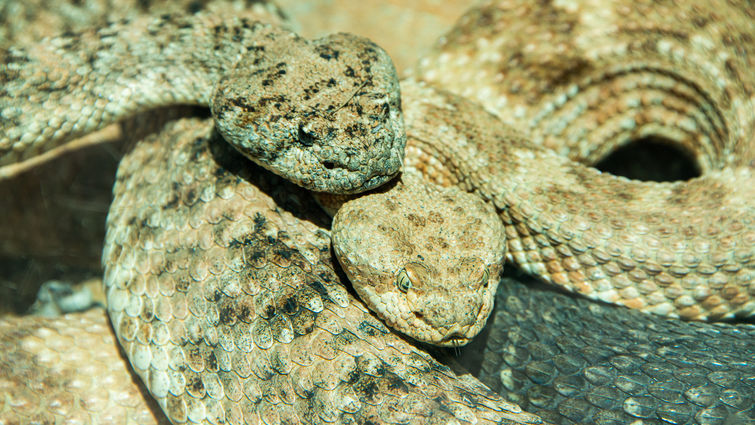

Loma Linda University researchers have discovered the first evidence of companion-soothing behavior in rattlesnakes, shedding light on the intriguing world of rattlesnake behavior. For the first time, evidence has been confirmed that indicates stressed snakes can find solace in the presence of a companion, leading to a reduction in heart rate changes similar to the way humans calm each other down.
Known as social buffering, the phenomenon occurs when an individual's stress levels decrease due to the company of another. While extensively studied in highly social animals such as mammals and birds, social buffering’s existence in rattlesnakes has now been established. The presence of a second snake was found to significantly decrease the change in heart rates of rattlesnakes after experiencing disturbances.
Animals experiencing acute or chronic stress produce more hormones that cause shifts in their nervous system, immune response, and behavior. Some animals can modulate their stress response in the presence of another member of their species, effectively buffering the stress. This social buffering phenomenon, however, has not been extensively studied in reptiles or other solitary creatures. To address this gap, researchers from Loma Linda University examined whether rattlesnakes in Southern California utilized social buffering to alleviate acute stress.
According to Chelsea Martin, a PhD student at Loma Linda University and the lead author of the study published in Frontiers in Ethology, "We showed that when two snakes were together and experienced a stressful situation, they could buffer each other's stress response, much like what happens to humans when they endure a stressful event together. This dampening of the stress response has not been reported previously in any reptile species."
Researchers conducted their study with 25 wild-caught southern Pacific rattlesnakes in three scenarios: when the snakes were alone, in the presence of a rope serving as an inanimate control object, and in the presence of a same-sex companion. To measure the snakes' heart rates, a reliable indicator of acute stress levels and social buffering, the researchers affixed electrodes near their hearts and attached them to a heart rate monitor. The snakes were placed in a bucket, creating a dark and enclosed testing environment.
After a 20-minute adjustment period, the snakes were deliberately disturbed. Martin and her colleagues measured the increase in heart rate from baseline, the time it took for the heart rate to return to normal, and the duration of rattling. The collected data demonstrated that social buffering likely occurs in nature and can persist in captivity. The researchers found no differences in social buffering between snake populations that overwintered individually and those that overwintered communally, nor did they observe any differences between male and female snakes.
Montane rattlesnakes, which hibernate communally, exhibit potentially stronger social networks than their lowland counterparts, who typically overwinter alone. Additionally, female rattlesnakes aggregate during pregnancy and stay with their newborn offspring. These factors were taken into account during the study to establish that the proclivity for buffering stress was equally evident in both populations and among female and male snakes.
"Our results provide insights into social behavior patterns of snakes and might also improve rattlesnakes' image. In the public eye, they are often maligned,” Martin said. “These findings could help to change that."
While the study provided valuable insights, there were limitations to consider. Researchers kept the snake pairs in confined spaces during the experiment, which did not allow for an examination of whether a stress buffering response occurs when snakes are in close proximity but not in physical contact. The research team hopes to explore this aspect in future studies. Another variable of interest is the impact of familiarity between two snakes on their social buffering response.
The research conducted at Loma Linda University opens new avenues for understanding the complexities of snake behavior.
“Our understanding of the social dynamics in reptiles has been enriched by what we observed,” Martin said. “This study challenges negative perceptions of rattlesnakes, potentially leading to a more balanced and informed perspective on these remarkable creatures.
Learn more about the data researched in the study here. For more information about research at LLU, visit researchaffairs.llu.edu or call 909-558-8544.


